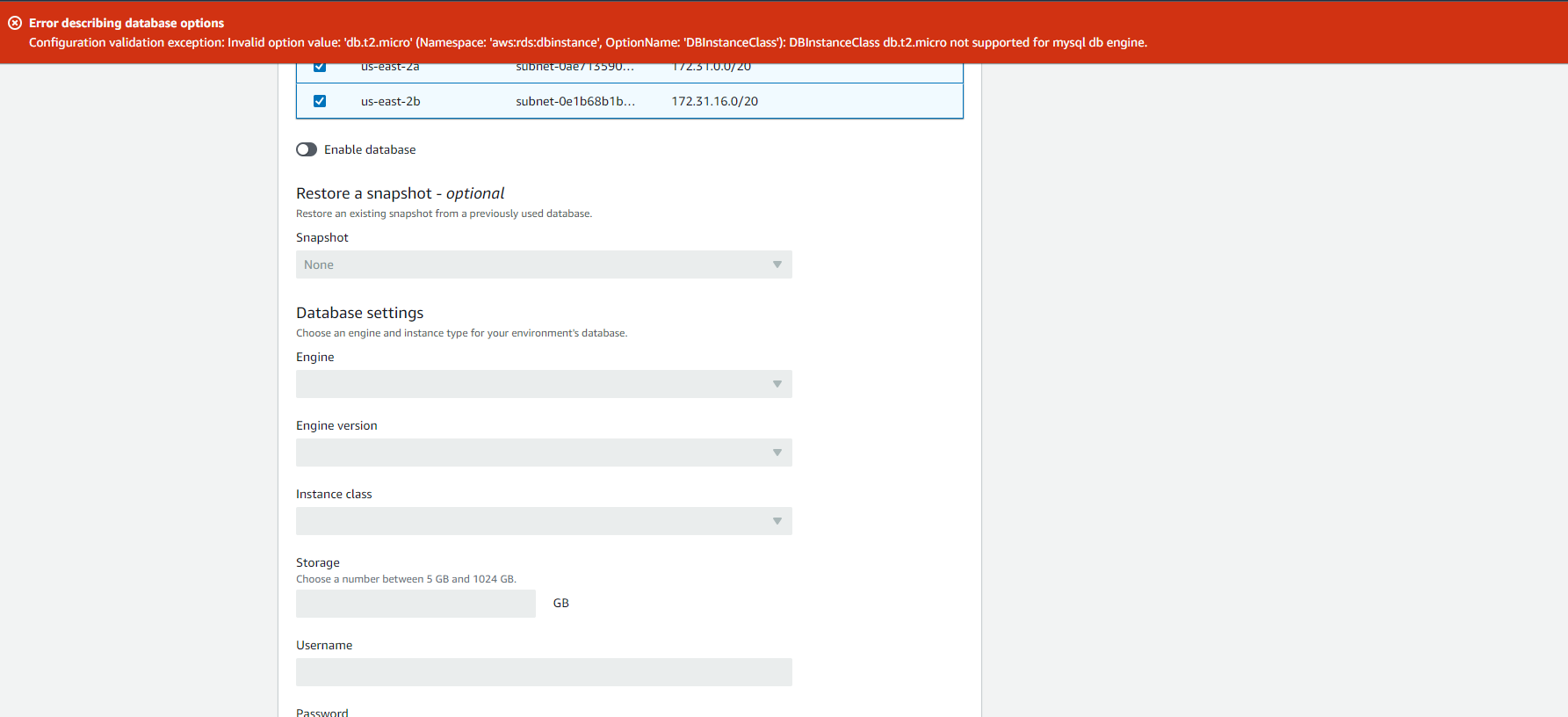2 Answers
- Newest
- Most votes
- Most comments
2

0
Hi Ravi,
If you're encountering an error with Elastic Beanstalk and RDS, even though you haven't manually set up an RDS instance, it might be due to Elastic Beanstalk's default configurations attempting to create an RDS database with settings that are no longer supported or compatible. Here's a quick fix you might try:
- Disable RDS Option: During the Elastic Beanstalk environment setup, if there's an option to enable an RDS database, ensure it's disabled. This step is to prevent Elastic Beanstalk from automatically trying to create an RDS instance with default parameters that might be causing the issue.
- Manual Configuration: After your Elastic Beanstalk environment is up, manually configure your RDS instance from the RDS service console with supported parameters and link it to your application as needed.
- AWS CLI: If the console doesn't allow you to bypass this error, using the AWS CLI to update your environment configuration without specifying an unsupported DB instance class can be an alternative.
Hope this helps!
answered a month ago
Relevant content
- asked 2 years ago
- asked a year ago
- asked 3 years ago
 AWS OFFICIALUpdated 7 months ago
AWS OFFICIALUpdated 7 months ago AWS OFFICIALUpdated a year ago
AWS OFFICIALUpdated a year ago AWS OFFICIALUpdated 9 months ago
AWS OFFICIALUpdated 9 months ago AWS OFFICIALUpdated 5 months ago
AWS OFFICIALUpdated 5 months ago
Hi Osvaldo, thanks for your response but I have not created any RDS service in my AWS console and still getting this error while creating Elastic beanstalk.
I've revised the response. It appears to be an AWS bug.
I'll create an issue at https://github.com/aws/elastic-beanstalk-roadmap/issues/ to report this problem.